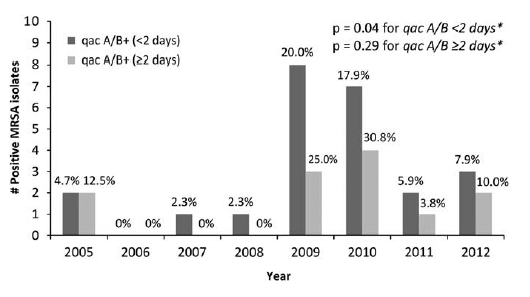Why I love the new NEJM CAUTI study!
This week, Sanjay Saint's group at Michigan published the kingdaddy of CAUTI studies in the New England Journal (free full text here). And yesterday, one of the authors guest blogged for us on the study.
Although it's not a randomized controlled trial, it's just about everything else you'd want to see in a CAUTI intervention study:
Although it's not a randomized controlled trial, it's just about everything else you'd want to see in a CAUTI intervention study:
- Large and multicenter (over 900 units in 603 hospitals across 32 states)
- Well designed
- Well executed
- Conceptually similar to the CLABSI Keystone study, arguably the most important study in our field since Semmelweiss, which demonstrated a huge (2/3) reduction in CLABSI
- Bundled interventions, including daily assessment of catheter necessity, catheter avoidance, aseptic insertion, proper catheter maintenance, feedback on CAUTI rates, and multifaceted training via in-person or virtual training, monthly content calls, and monthly coaching calls
Now the results:
- Overall there was a statistically significant reduction in CAUTIs of 14% after the intervention
- Absolute rate reduction was 0.35 CAUTI/1,000 catheter days
- When hospital units were stratified (ICU vs non-ICU), all of the reduction was found to be in non-ICUs. There was no significant change in CAUTI rates in ICUs.
So let's bring this study a little closer to home. We'll assume that a 700-bed hospital has 35,000 catheter days yearly. If they implemented this intervention with the same results, the number of avoided infections would be 12.2 annually. If 1% of CAUTI patients become bacteremic (see here and here), they would avoid 0.12 secondary BSIs per year. And if 11% of bacteremic UTIs result in death, they would avoid 0.01 deaths per year. Expressed another way, this comprehensive, bundled intervention would result in saving 1 life every 100 years. Saving any life is a noble goal. But context is key. CLABSIs have an attributable mortality of 25%. In other words, CLABSIs kill people relatively commonly. CAUTIs rarely do. And there are many other nosocomial events that kill more than 1 person every 100 years.
The take home message is that a superb study designed by the world's CAUTI experts didn't yield much impact. This is no fault of the investigators. It's due to two reasons: (1) the attributable morbidity and mortality of CAUTI are relatively small; and (2) CAUTIs have low preventability (at least in 2016).
Dan Livorsi and Eli Perencevich summed it all up in their ICHE editorial last year when they questioned whether an NHSN-defined CAUTI is an episode of preventable harm. Is the work we do on surveillance and prevention of CAUTI an opportunity or an opportunity cost? I think the answer is clear.
Lastly, one point made in the guest post yesterday really bothers me: "how a hospital addresses CAUTI likely says much about how such a facility attacks other endemic and mundane harms such as falls, delirium and pressure sores." This is a specious argument. As the Chief Quality Officer of an academic medical center, I spend a great deal of time deciding where to best utilize our resources to prevent both infectious and non-infectious adverse outcomes. In fact, the hospital's leadership team actively engages in setting our quality and safety targets. As a utilitarian, I'm duty bound to attempt to have the greatest impact for our patients. And the reason why I love this study so much is that it makes the decision to focus on issues other than CAUTI even easier.




Comments
Post a Comment
Thanks for submitting your comment to the Controversies blog. To reduce spam, all comments will be reviewed by the blog moderator prior to publishing. However, all legitimate comments will be published, whether they agree with or oppose the content of the post.